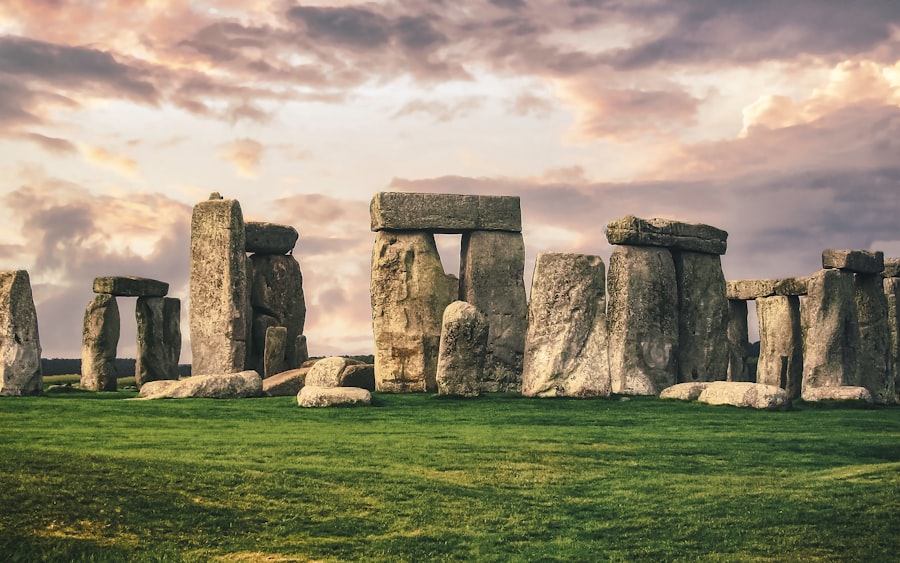The Drake Passage Monument stands as a testament to the rich maritime history that surrounds one of the most treacherous waterways in the world. Named after the famed English explorer Sir Francis Drake, who navigated these perilous waters in the late 16th century, the monument serves as a reminder of the challenges faced by early explorers. The passage itself, located between the southern tip of South America and Antarctica, has long been a critical route for maritime navigation, connecting the Atlantic and Pacific Oceans.
Over the centuries, it has witnessed countless voyages, some successful and others tragically lost to its fierce storms and unpredictable currents. The monument was established in the early 21st century, driven by a desire to honor those who have ventured into these tumultuous waters. It was erected not only to commemorate the explorers of the past but also to raise awareness about the environmental significance of the region.
The Drake Passage is not merely a body of water; it is a vital ecosystem that supports a diverse range of marine life. The history of the monument reflects humanity’s ongoing relationship with nature and the sea, highlighting both the triumphs and tribulations of exploration.
Key Takeaways
- The Drake Passage Monument was established in 2019 to honor the first successful navigation of the treacherous waters by Sir Francis Drake in 1578.
- The monument holds great significance as a symbol of exploration, adventure, and the meeting of the Atlantic and Pacific Oceans.
- The discovery of the Drake Passage Monument was a collaborative effort between the Chilean Antarctic Institute and the National Geographic Society.
- Preserving the Drake Passage Monument is crucial for maintaining its historical and ecological value, as well as for future research and exploration.
- The Drake Passage is home to a diverse range of wildlife and a unique ecosystem, including penguins, seals, and various seabird species.
The Significance of the Drake Passage Monument
The significance of the Drake Passage Monument extends beyond its historical context; it embodies a broader narrative about exploration, resilience, and environmental stewardship. As a symbol of human endeavor, it represents the spirit of adventure that has driven countless individuals to brave the elements in pursuit of discovery. The monument serves as a focal point for discussions about maritime history and the evolution of navigation techniques, reminding visitors of the courage required to traverse such formidable waters.
Moreover, the monument plays a crucial role in promoting awareness about the ecological importance of the Drake Passage. This region is home to unique marine species and serves as a critical habitat for various migratory birds and marine mammals. By highlighting these ecological aspects, the monument encourages conservation efforts and fosters a deeper appreciation for the delicate balance of life within this maritime environment.
It stands as a call to action for future generations to protect and preserve this vital ecosystem.
How the Drake Passage Monument was Discovered

The discovery of the Drake Passage Monument was not an event marked by fanfare or grand announcements; rather, it emerged from a series of explorations and research initiatives aimed at understanding the region’s historical and ecological significance. Researchers and historians began to piece together the narrative surrounding Sir Francis Drake’s voyages, leading them to identify key locations that warranted recognition. Through meticulous study and collaboration with local communities, they unearthed stories that had long been forgotten, ultimately culminating in the decision to erect a monument.
The process involved extensive fieldwork, including underwater surveys and archaeological investigations. These efforts revealed artifacts and remnants from past expeditions, providing invaluable insights into the challenges faced by early navigators. The discovery of these historical elements not only enriched the narrative surrounding the Drake Passage but also underscored the need for a dedicated monument to honor those who had ventured into its depths.
The culmination of these efforts resulted in a monument that stands as both a tribute to exploration and a beacon for future research.
The Importance of Preserving the Drake Passage Monument
| Metrics | Data |
|---|---|
| Size of the Drake Passage Monument | Approximately 1.1 million square kilometers |
| Biodiversity in the area | Home to a wide variety of marine species including penguins, seals, and whales |
| Importance for scientific research | Provides valuable data on climate change, oceanography, and marine ecosystems |
| Threats to the monument | Overfishing, climate change, and potential oil and gas exploration |
| Significance for global conservation | Crucial for preserving the Earth’s biodiversity and combating climate change |
Preserving the Drake Passage Monument is essential for several reasons, not least of which is its role in educating future generations about maritime history and environmental conservation. As climate change continues to impact marine ecosystems worldwide, maintaining such monuments becomes increasingly vital. They serve as physical reminders of humanity’s connection to nature and the importance of safeguarding our planet’s resources.
By preserving this monument, society acknowledges its responsibility to protect both historical legacies and contemporary ecosystems. Furthermore, the monument acts as a catalyst for ongoing research and exploration in the region. As scientists continue to study the unique biodiversity of the Drake Passage, they rely on landmarks like this one to inspire curiosity and foster engagement with local communities.
The preservation of the monument ensures that it remains a site for education and exploration, encouraging visitors to learn about both historical voyages and current environmental challenges. In this way, it becomes a living testament to humanity’s ongoing journey toward understanding and protecting our natural world.
The Wildlife and Ecosystem of the Drake Passage
The wildlife and ecosystem of the Drake Passage are as diverse as they are fascinating. This region is renowned for its rich marine biodiversity, which includes an array of species such as whales, seals, penguins, and various fish. The nutrient-rich waters are a result of upwelling currents that bring cold, deep water to the surface, creating an ideal environment for phytoplankton growth.
This primary production forms the foundation of a complex food web that supports larger marine animals. Among the most iconic inhabitants of the Drake Passage are several species of whales, including humpback whales and orcas, which migrate through these waters in search of food. Additionally, seabirds such as albatrosses and petrels can often be seen soaring above the waves, taking advantage of the strong winds that characterize this region.
The interplay between these species creates a dynamic ecosystem that is both resilient and vulnerable to environmental changes. Understanding this delicate balance is crucial for conservation efforts aimed at protecting these remarkable creatures and their habitats.
The Geographical Features of the Drake Passage

The geographical features of the Drake Passage contribute significantly to its reputation as one of the most challenging maritime routes in existence. Stretching approximately 800 kilometers (500 miles) between Cape Horn in South America and Antarctica, this passage is characterized by its deep waters and strong currents. The convergence of cold Antarctic waters with warmer currents from the north creates turbulent conditions that can lead to sudden storms and rough seas.
In addition to its challenging conditions, the Drake Passage is home to several notable geographical landmarks. The South Shetland Islands lie to its north, while various underwater ridges and seamounts punctuate its depths. These features not only influence navigation but also play a role in shaping local ecosystems by providing habitats for diverse marine life.
The unique geography of the Drake Passage serves as both a barrier and a bridge between continents, highlighting its significance in global oceanic circulation patterns.
The Challenges of Exploring the Drake Passage
Exploring the Drake Passage presents numerous challenges that have deterred even seasoned mariners throughout history. The unpredictable weather patterns are perhaps the most daunting aspect; storms can arise with little warning, creating treacherous conditions for vessels attempting to navigate these waters.
In addition to weather-related challenges, navigational difficulties abound due to strong currents that can shift unexpectedly. These currents can create hazardous situations for vessels that are unprepared or ill-equipped to handle them. Furthermore, icebergs drifting from Antarctica pose additional risks during certain times of the year.
Despite these challenges, adventurers continue to be drawn to the allure of exploration in this remarkable region, driven by a desire to uncover its secrets and experience its raw beauty firsthand.
The Cultural and Historical Connections to the Drake Passage
The cultural and historical connections to the Drake Passage are deeply intertwined with humanity’s quest for exploration and understanding of our planet. For centuries, this passage has served as a gateway for explorers seeking new trade routes or scientific knowledge about distant lands. Indigenous peoples along South America’s southern coast have their own rich histories tied to these waters, often viewing them as sacred spaces filled with stories passed down through generations.
The stories of shipwrecks, daring rescues, and encounters with wildlife have become part of maritime folklore surrounding the Drake Passage. These narratives continue to inspire contemporary adventurers who seek to honor those who came before them while forging their own paths through this storied waterway.
The Research and Scientific Discoveries in the Drake Passage
The Drake Passage has become an important site for scientific research due to its unique ecological characteristics and role in global ocean circulation patterns. Researchers from around the world flock to this region to study everything from marine biology to climate change impacts on ocean ecosystems. The convergence of different water masses creates an ideal environment for studying how various species interact within their habitats.
Recent scientific discoveries have shed light on how climate change is affecting marine life in this area. Studies have shown shifts in species distribution as warmer waters encroach upon traditional habitats, prompting researchers to investigate potential consequences for local ecosystems. Additionally, ongoing research into oceanographic processes helps scientists better understand how changes in temperature and salinity may influence global weather patterns—a critical area of study given current concerns about climate change.
The Future of the Drake Passage Monument
The future of the Drake Passage Monument hinges on continued efforts toward preservation and education about both its historical significance and ecological importance. As climate change poses increasing threats to marine ecosystems worldwide, it becomes imperative that society recognizes landmarks like this one as vital components in fostering awareness about environmental stewardship. Future initiatives may include enhanced visitor experiences that incorporate interactive educational programs focused on conservation efforts.
Moreover, collaboration between researchers, local communities, and conservation organizations will be essential in ensuring that both history and ecology are preserved for generations to come. By engaging diverse stakeholders in discussions about sustainable practices within this region, there is potential for innovative solutions that honor both cultural heritage and environmental integrity—ultimately securing a brighter future for both people and nature alike.
How to Visit and Experience the Drake Passage Monument
Visiting the Drake Passage Monument offers an opportunity for travelers to immerse themselves in both history and nature while experiencing one of Earth’s most remarkable maritime regions firsthand. Various expedition companies provide guided tours that allow visitors to explore not only the monument itself but also surrounding areas rich with wildlife and stunning landscapes. Travelers embarking on this journey should prepare for unpredictable weather conditions typical of this region; layering clothing is advisable along with sturdy footwear suitable for outdoor exploration.
Many tours include educational components led by knowledgeable guides who share insights into local ecology, history, and conservation efforts—enriching visitors’ understanding while fostering appreciation for this extraordinary environment. In conclusion, exploring all facets surrounding both history and ecology within this remarkable region provides invaluable insights into humanity’s relationship with nature—an experience that resonates long after leaving its shores behind.
The Drake Passage Monument is a fascinating subject for those interested in maritime history and the exploration of the Southern Ocean. For a deeper dive into the geographical significance and historical context of this region, you might find the article on MyGeoQuest particularly enlightening. It provides insights into the challenges faced by early explorers navigating these treacherous waters. To learn more, you can visit the related article on
